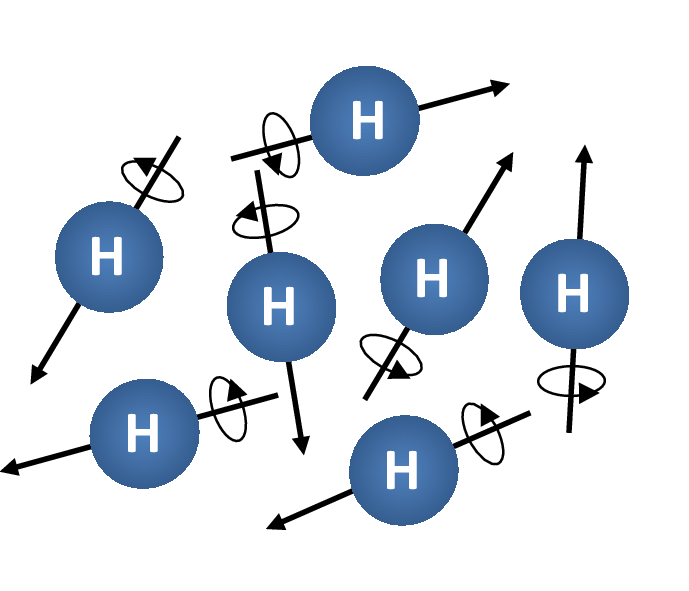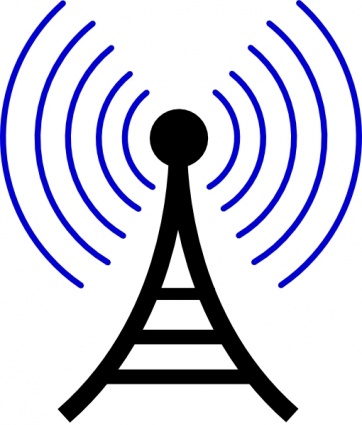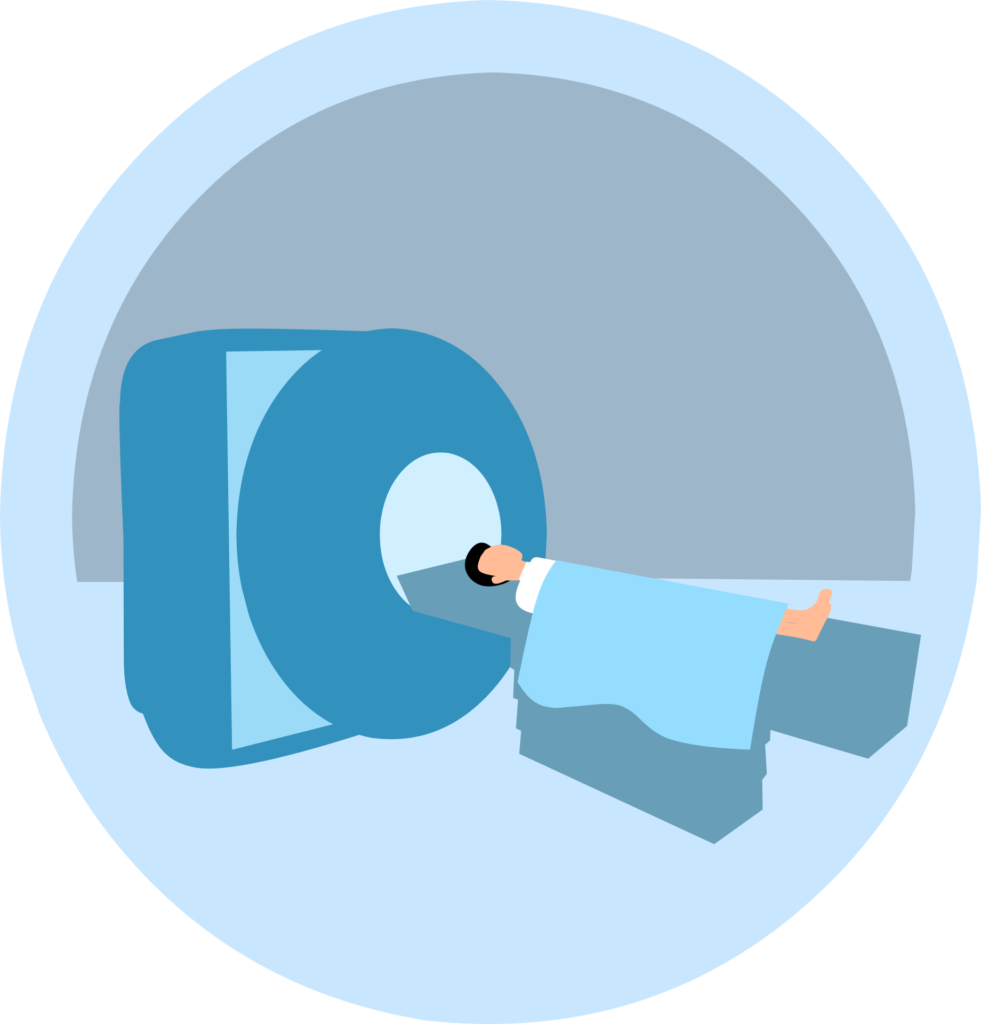This question is asked over and over by thousands of people every year. Patients, healthcare workers and even doctors all have a different level of understanding as to what MRI is and how it is used. There are MRI centers just about everywhere these days, so it’s safe to say that MRI is one of the most popular ways to image and diagnose patients with certain conditions. You probably know at least a few people who have had an MRI.
So, What is MRI?
MRI stands for Magnetic Resonance Imaging. Even the name seems complicated and doesn’t really reveal what MRI is or how it works. Let’s break it down! The magnet part is pretty easy to understand. Everyone knows what a magnet is. I’m sure many of you have several of them on your refrigerator from the local bank or real estate office. You probably even have some from your last several vacations. They are vital in some homes holding important documents such as last week’s homework, works of art, shopping lists or just reminders. Unfortunately, these wouldn’t be very useful for MRI.

In MRI the magnet is a very large, very powerful superconductive electromagnet. I know another complicated term, but all it means is that the magnetic field is created by using electricity and a coil of wire made from a special material. They work together to create a really strong, very consistent magnetic field. In fact, the magnetic field is so strong that it can magnetize just about anything that is brought near it. The density, or strength, of this magnetic field is about 60,000 times stronger than the earth’s magnetic field and is measured in units called Tesla.
Do MRI’s actually magnetize people during MRI exams??
In a way, Yes. But maybe not exactly the way you’re thinking about it. No body needs to worry about sticking to their refrigerator after and MRI exam. After someone has an MRI they won’t attract pieces of metal. They won’t suddenly have a magnetic personality or anything like that. What the magnetic field will do is align water molecules within our bodies in a special way to allow them to give the MRI machine specific information about the body part that is being imaged. Water molecules contain hydrogen molecules that act as little magnetics themselves. When two magnets are brought near each other they want to align with each other and work together. The opposite poles are attracted, north to south and south to north.

Hydrogen molecules within our body are aligned randomly and go about their business doing their own thing. But when they are brought near an MRI machine they start to align with the magnetic field like little soldiers and begin working together. Once the strong magnetic field is taken away, the patient leaves the MRI room, Hydrogen will go back to the same randomness they enjoyed prior to being exposed to the magnetic field, completely unchanged. This is the foundation for how MRI images are created.
Is it Possible for a Magnet to take Pictures of our Body?
Well, not really. Although the strong magnetic field is a vital part of MRI imaging some additional energy is needed for MRI images to be created. This is the “R” or Resonance in MRI. What is resonance? Resonance is a fancy term that describes how energy is transferred from one thing to another. It usually is used to describe sound energy. Technically speaking resonance is the sound which is produced by an object when it vibrates at the same rate as the sound waves from another object. An example of resonance is plucking an acoustic guitar. Once the string is plucked or strummed it will vibrate. This vibration will transmit energy into the hollow wooden body and the air inside, causing both to resonate or vibrate producing the sound we hear. Resonance in MRI works in a similar way. This vibration or resonance is caused by simple radio frequencies.

Radio Frequencies are transmitted and cause the hydrogen molecules to absorb that energy and resonate or vibrate in a specific way. Once the radio frequencies are turned off the hydrogen molecules will lose or shed this extra energy. The energy that is released by the hydrogen will hold all the information necessary to create the MRI image. This energy is collected by a device called a coil. The coil is like a big receiver or antenna that is tuned to collect MRI signal. Whatever body part is to be imaged will be positioned with one of these MRI coils.
How Do MRI Signals become Images?
MRI systems are a very complicated set of computer systems that all work together. These systems are responsible for transmitting radio waves, collecting, and amplifying MRI signals. All the data or signal collected by the MRI coils is processed through a sophisticated algorithm. The algorithm will calculate what the image looks like based upon the information received by the coil.
Why are MRI Scanners so Noisy?

Its true MRI machines do generate a lot of noise. This is one of the most common complaints from patients who undergo MRI examinations. So where is all this noise coming from?? Is it the magnet or the radio frequencies? The main magnetic field does not generate any noise. Is the noise caused by the radio frequencies? The process of transmitting and receiving the radio frequencies does not cause any of the noise that we often hear patients complaining about. Both systems, for the most part, are silent.
So, as we talked about earlier, the “M” in MRI means the main magnet. And it’s true that there is only one main magnet. And the main magnet never changes its strength or direction. The main magnet is fixed and provides a constant reliable magnetic field. Within the main magnet there is a subset of magnets, called gradients. Gradients are smaller electromagnets located within the main magnetic field. There are three paired sets of gradient magnets that work together to localize areas within the body that are being imaged. They provide a road map or a set of coordinates to the MRI system that allows it to produce exact images of the anatomy being imaged. During the imaging process the gradient magnets need to be turned on and off several times. Gradients are switched on and off several times a second. This rapid switching causes the gradient coils to vibrate and it is this vibration that causes all the noise that we hear while an MRI examination is happening. During an MRI exam several different sets of images will be acquired to provide the Doctor with all the information that they need to provide an accurate diagnosis. Each set of MRI images is referred to as a sequence. And each sequence will have its own unique noise signature, varying in both volume and rhythm that we hear.
Even though it doesn’t really seem like anything is happening when someone is having an MRI, other than the machine making a lot of noise, there is a lot going on. MRI provides highly detailed images of both bone and soft tissue structures that aren’t visible with any other type of imaging. MRI has become an invaluable tool to physicians.

There are nearly 40 million MRI procedures performed in the US every year! Consumers are much savvier today than ever before, and this is true for patients as well. I have seen over several years that patients are more informed and want to take an active role in their healthcare.
Just the fact that you are reading this blog proves just how connected we are and our need as humans to learn and educate ourselves in the things that touch our lives. I hope you find the information here helpful and informative. If you are interested in receiving more information about MRI or have something specific that you would like to see covered please sign up to our email list and leave a comment.
